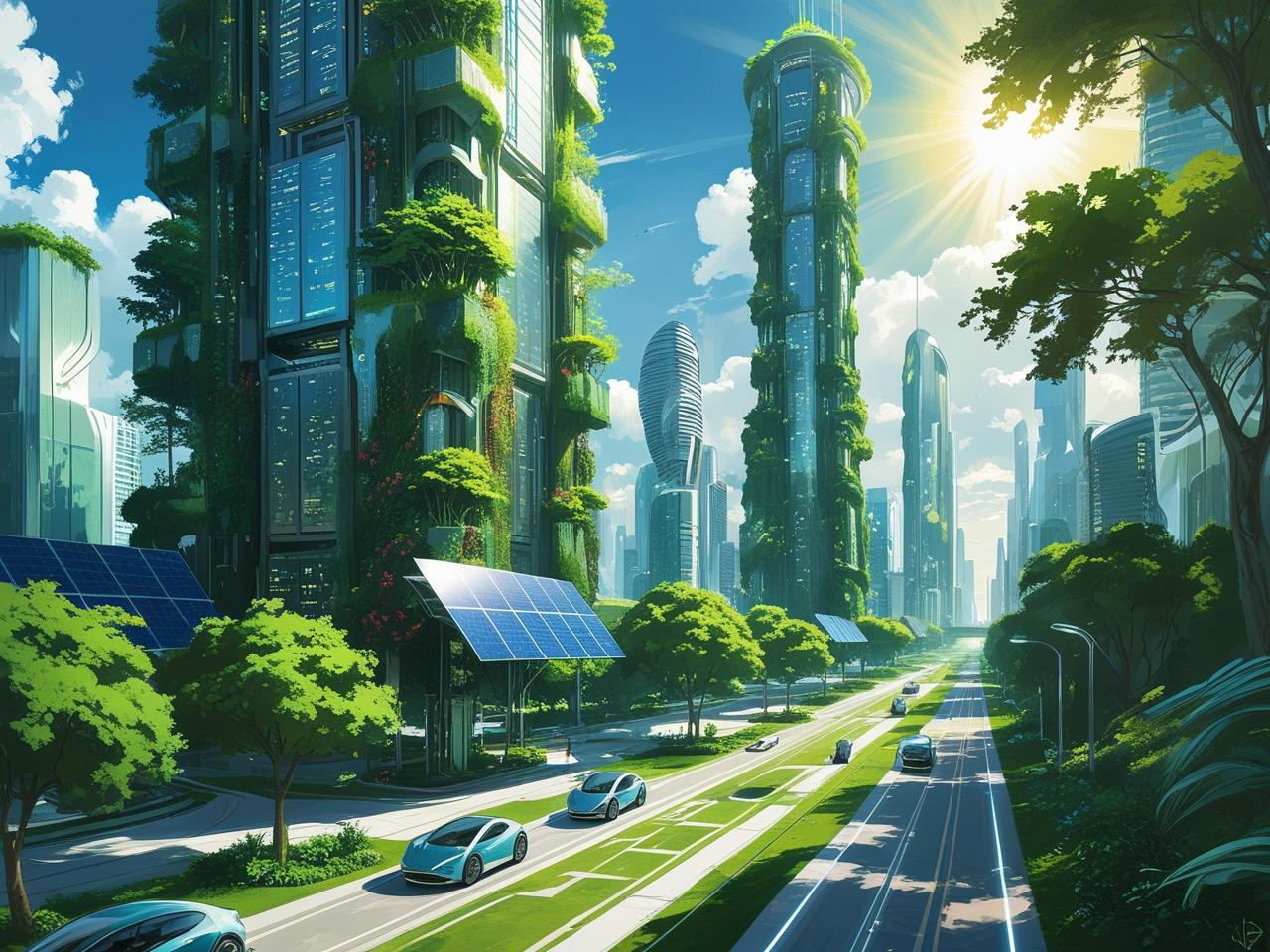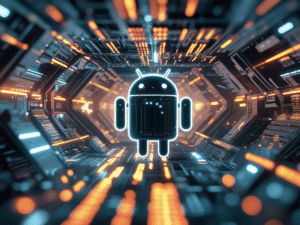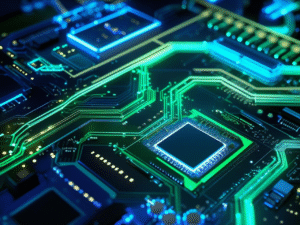Table of Contents
ToggleNew ideas for a better future
The need for long-term solutions has never been more important as problems like climate change, resource depletion, and pollution get worse around the world. Fortunately, new ideas are coming up to satisfy this need. New technologies and smart strategies are making the world a better place in many industries. These new ideas are not only benefiting the environment, but they are also making the economy stronger and living better.
1. Technologies for renewable energy
Renewable energy is one of the most important fields of innovation. Improvements in solar, wind, hydro, and geothermal power are making renewable energy cheaper and more effective.
For example, perovskite solar cells are making solar energy more efficient and flexible than ever.
Floating turbines on offshore wind farms are bringing renewable energy to deeper areas that were formerly thought to be unusable.
Energy storage technology, such as high-capacity batteries and gravity-based storage devices, makes sure that renewable energy can be stored and used when needed.
2. Food Tech and Sustainable Farming
We need to rethink how we grow and distribute food if we want to feed a growing population in a way that is beneficial for the environment.
Vertical farming and hydroponics make it possible to grow food in cities with little land and water.
Plant-based proteins and lab-grown meat are making animal farming less harmful to the environment.
AI-driven precision agriculture helps farmers use water, fertilisers, and pesticides more effectively.
3. Technologies for saving water
In many regions, the availability of clean water poses a significant challenge. Some new ideas are
Water generators that extract water from the atmosphere are gaining popularity.
Smart irrigation systems reduce water consumption in farming.
Technologies for recycling and desalinating water are becoming easier to use and require less energy.
Conclusion
Sustainable innovations are actionable solutions that can change the world. These new ideas provide us hope and a way to move forward, even while there are still problems. To speed up these changes and make the world a better place for future generations, governments, businesses, scholars, and individuals must all work together.
How technology affects climate change.
People have long considered technology to be both a force for progress and a cause of problems around the world. Climate change is one of the most important problems our planet is facing right now, and technology has both good and bad effects on it. It has done a lot of harm to the environment, but it also gives us strong tools to fix the damage and even stop it from happening in the first place.
1. Emissions and Industrialisation
The Industrial Revolution was a major turning point in human history. It led to mass industry, mechanized transportation, and large-scale energy use, all thanks to technical progress. Sadly, it also caused a tremendous increase in greenhouse gas and carbon dioxide (CO₂) emissions. Factories, cars, and power plants, all of which use fossil fuels, are still some of the major contributors to pollution.
2. Getting resources
Rare earth metals and other limited resources are very important to modern technologies. When you mine these materials, it typically destroys habitats, pollutes water, and cuts down trees. Also, the quick turnover of electronic equipment creates more and more electronic waste, much of which ends up in landfills, where it leaks toxic chemicals into the soil and water.
3. Data Centers That Don’t Use Energy
There is a lot more data being used now that we live in the digital age. Cloud computing, AI, and streaming services make things work better and connect more easily, but the huge data centers that power them use a lot of electricity, which is typically made from non-renewable sources.
Using technology to fight climate change
Although these technologies have negative impacts, they also provide us with new methods to reduce our carbon footprint and adapt to changing circumstances.
1. Technologies for renewable energy
Solar panels, wind turbines, hydroelectric systems, and geothermal power plants are changing the way the globe makes electricity. These clean energy sources cut down on greenhouse gas emissions by a huge amount and are getting cheaper and easier to scale up.
2. Intelligent Farming
Farmers can utilize precision farming technologies like drones, sensors, and AI-driven analytics to get the most out of their water, cut down on fertilizer waste, and grow more crops. Agriculture is a big generator of methane and nitrous oxide, but these methods help limit their effects on the environment.
3. Monitor the weather closely
More accurate climate predictions and environmental monitoring are possible because of advanced satellite systems, AI algorithms, and supercomputers. This helps governments and groups make smart choices about how to prepare for disasters, develop cities, and protect the environment.
4. Sustainable Innovation
Sustainable innovation is the key to getting the most out of technology while hurting the least. This involves making technologies that are beneficial for the environment, use less energy, and can be recycled from the start. It also needs sensible legislation, international cooperation, and public awareness to guarantee that technical progress is in line with climate goals.
Conclusion
Technology may both make climate change worse and help fix it. While past progress has made the world warmer, emerging technologies could make the world a better place to live in the future. The hard part is figuring out how to use this potential. We can achieve this by investing in clean technologies, being responsible consumers, and making smart decisions about the tech we use and how we use it. Only then can technology really help the world stay healthy and strong against climate change.
The Role of IoT in Energy Conservation
Because of climate change and rising energy needs, saving energy has become a top priority around the world. The Internet of Things (IoT) is a network of linked devices that share and collect data. It has become a valuable tool for making homes, businesses, and cities more energy efficient. IoT is revolutionising energy management and conservation by enabling intelligent use, real-time monitoring, and task automation.
Getting to know IoT in the energy world
IoT is the process of putting sensors and communication devices into physical systems so that they can collect and share data. IoT devices keep an eye on and control how much electricity, water, gas, and other utilities are used to save energy. These devices not only monitor energy consumption, but also enable automatic modifications to reduce waste.
1. Smart Grids:
IoT is crucial for making electrical grids more modern. Smart grids use smart meters and sensors to keep an eye on energy flow, find outages, and make sure that energy is distributed in the best way possible. They help utility companies manage supply and demand better, which cuts down on energy loss and makes the system more reliable.
2. Intelligent Buildings
A lot of the world’s energy is used by buildings. Smart buildings with IoT technology employ sensors to turn on and off lights, heating and cooling systems, and appliances based on how many people are there and how they use them. This type of control saves a lot of energy and makes people more comfortable.
3. Automation in factories
IoT sensors in manufacturing and industry monitor machine performance, identify leaks, and ensure optimal machine efficiency. IoT-powered predictive maintenance cuts down on energy waste caused by broken equipment and stops unplanned downtime.
4. Automating Your Home
Smart thermostats, lighting systems, and plugs are examples of IoT devices that let homeowners automate and regulate their energy use from afar. These devices can learn how people use them and change their settings to save energy and minimise energy bills.
5. Smart cities are a reality
City planning utilizes IoT to enhance elements such as traffic lights, streetlights, and public transportation. For instance, smart streetlights can dim when no one is present or adjust their brightness based on the amount of natural light available. This method saves a lot of electricity.
Advantages of IoT for Saving Energy
1. Real-time Monitoring:
Collecting data all the time gives you instant information on how energy is being used, which makes it easier to find and rectify problems.
2. Predictive Analytics:
IoT leverages data to estimate future energy requirements and ensure optimal operational efficiency.
3. Remote Management:
Users can control systems from anywhere, which cuts down on energy use that isn’t needed.
4. Sustainability Goals:
By tracking and lowering carbon emissions, IoT helps businesses accomplish their environmental and regulatory goals.
Disadvantages of IoT
Even while IoT has many benefits, it still has problems with adoption:
Data Security:
Connected devices are popular targets for hackers; therefore, strong security is a must.
Interoperability means that devices from different companies must operate together perfectly for the system to work at its best.
High Initial Costs:
Setting up and connecting IoT equipment can be expensive, but the savings over time frequently make the cost worth it.
The Future of IoT in Energy
IoT will get better as technology gets better. It will use AI and machine learning to manage energy more intelligently. As more people use renewable energy sources, they will work better with IoT systems to ensure that production and use are at their best.
Conclusion
The Internet of Things (IoT) represents a big step forward in the fight to save energy around the world. It helps both consumers and businesses cut down on waste, save money, and make the world a greener place by allowing for real-time monitoring, automation, and data-driven decision-making. The relevance of IoT technology in ensuring sustainable energy use will only grow as it gets better.



